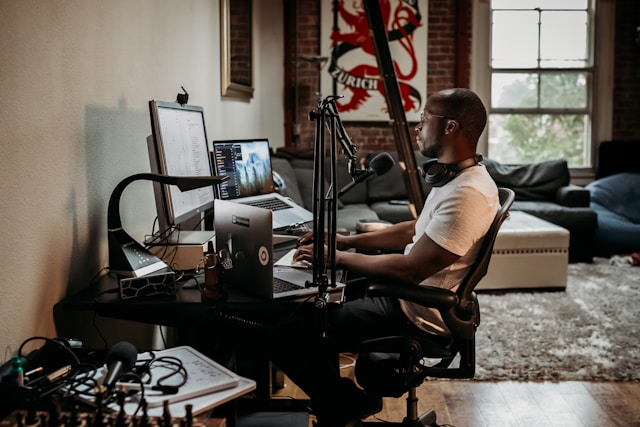In recent years, the fusion of art and technology has reached a fascinating frontier. Artificial intelligence, once confined to labs and code, is now making its mark on the creative world. From painting to music and even sculpture, artists are using AI to make art in ways that challenge traditional boundaries and redefine the meaning of creativity.
The Rise of AI in Art
The use of artificial intelligence in art isn’t entirely new its roots trace back to the 1970s with experiments in algorithmic art. However, the development of powerful machine learning models and accessible platforms has rapidly accelerated its adoption. With tools like DALL·E, Midjourney, and Runway ML, creating stunning visuals with just a few words has become a reality for both seasoned artists and curious beginners.
AI-generated art refers to artworks created with the help of algorithms that learn from vast datasets. These systems analyze patterns in visual, textual, or audio data and generate outputs that can range from photorealistic portraits to surreal dreamscapes. Generative Adversarial Networks (GANs), a form of deep learning, are particularly popular in this field. They involve two neural networks a generator and a discriminator that compete to produce ever more convincing art.
How Artists Use AI Tools
Artists use AI in various ways, from simple experimentation to fully integrated practices. For instance, visual artists employ image generation tools like DALL·E and Stable Diffusion to brainstorm concepts, develop compositions, or generate entirely new visual styles. These AI systems can synthesize complex images based on text prompts, allowing creators to visualize ideas that would otherwise be difficult to produce manually.
Others use machine learning art platforms that enable style transfer, turning photographs into artworks reminiscent of Picasso or Van Gogh. Musicians are also exploring AI to compose melodies, remix samples, and even generate lyrics. Performance artists and digital sculptors are creating interactive installations that respond to viewer inputs in real time, giving audiences a sense of co-creation.
In many cases, artists don’t see AI as a replacement for human effort but as a collaborator an intelligent assistant that opens new doors of possibility.
Notable Artists and AI Art Projects
Several artists have become prominent for their pioneering use of AI. Refik Anadol, a Turkish-American media artist, uses AI and data visualization to create mesmerizing large-scale installations. His works blend data science, architecture, and light into immersive environments that evoke both emotion and awe.
Sougwen Chung, a former researcher at MIT Media Lab, collaborates with robotic arms powered by AI. Her installations explore the relationship between human gesture and machine intelligence, blurring the line between analog and digital creativity.
Other noteworthy projects include AI-generated portraits auctioned at Christie’s and Sotheby’s, as well as exhibitions like “Uncanny Valley” at the de Young Museum, which explore the aesthetics and implications of AI art. These projects underscore how AI artists are making their presence felt in mainstream art circles.
The Creative Process and Philosophy Behind AI Art
For many artists, the process of making AI art is as important as the final output. The creative workflow often involves training a model on a dataset such as thousands of photos, paintings, or sketches and then refining the outputs through human curation and editing. The role of the artist shifts from maker to orchestrator, guiding the system to express their vision.
This shift challenges long-held ideas about authorship and originality. If a machine generates an artwork, who owns the credit? The artist who created the dataset? The engineer who built the model? Or the AI itself?
These philosophical questions are central to the evolving discussion around AI in the creative space. While some critics argue that machine learning art lacks the emotional depth of human-made work, others contend that AI can expand human creativity by revealing new patterns, styles, and perspectives.
Ethical and Cultural Implications
With the rise of AI art, ethical concerns have followed. One major issue is copyright: many AI models are trained on existing artworks scraped from the internet, often without consent. This raises questions about intellectual property and fair use, especially when AI-generated art closely resembles the work of specific artists.
Bias is another concern. Since machine learning models reflect the data they’re trained on, they can inadvertently reproduce stereotypes, exclude marginalized groups, or reinforce cultural homogeneity. Artists and developers must be aware of these pitfalls and work toward more inclusive datasets and transparent methodologies.
There’s also the matter of labor and authenticity. As generative tools become more advanced, there’s fear that AI could devalue the work of traditional artists or lead to creative homogenization. Yet, many artists believe that AI, when used thoughtfully, can complement rather than replace human creativity.
The Future of Art in the Age of AI
Looking ahead, the intersection of artificial intelligence and art is likely to deepen. We may see more collaborative ecosystems where human and machine creativity blend seamlessly producing not just static artworks, but dynamic, evolving pieces that change with viewer interaction or environmental data.
AI art will likely influence education as well, teaching young artists to think computationally while encouraging cross-disciplinary exploration. Museums and galleries may adopt AI to personalize exhibits or analyze visitor behavior, creating more immersive and engaging experiences.
More broadly, the use of AI in art forces us to rethink what it means to create. Is creativity a uniquely human trait, or can machines be creative too? As technology continues to evolve, the boundaries of that question will be pushed further than ever before.
Conclusion
Artists using AI to make art are at the forefront of a cultural and technological revolution. With tools like machine learning, generative art platforms, and creative algorithms, the definition of art is expanding. This isn’t the end of human creativity it’s the beginning of a new era where human imagination meets artificial intelligence in unexpected and thrilling ways.

